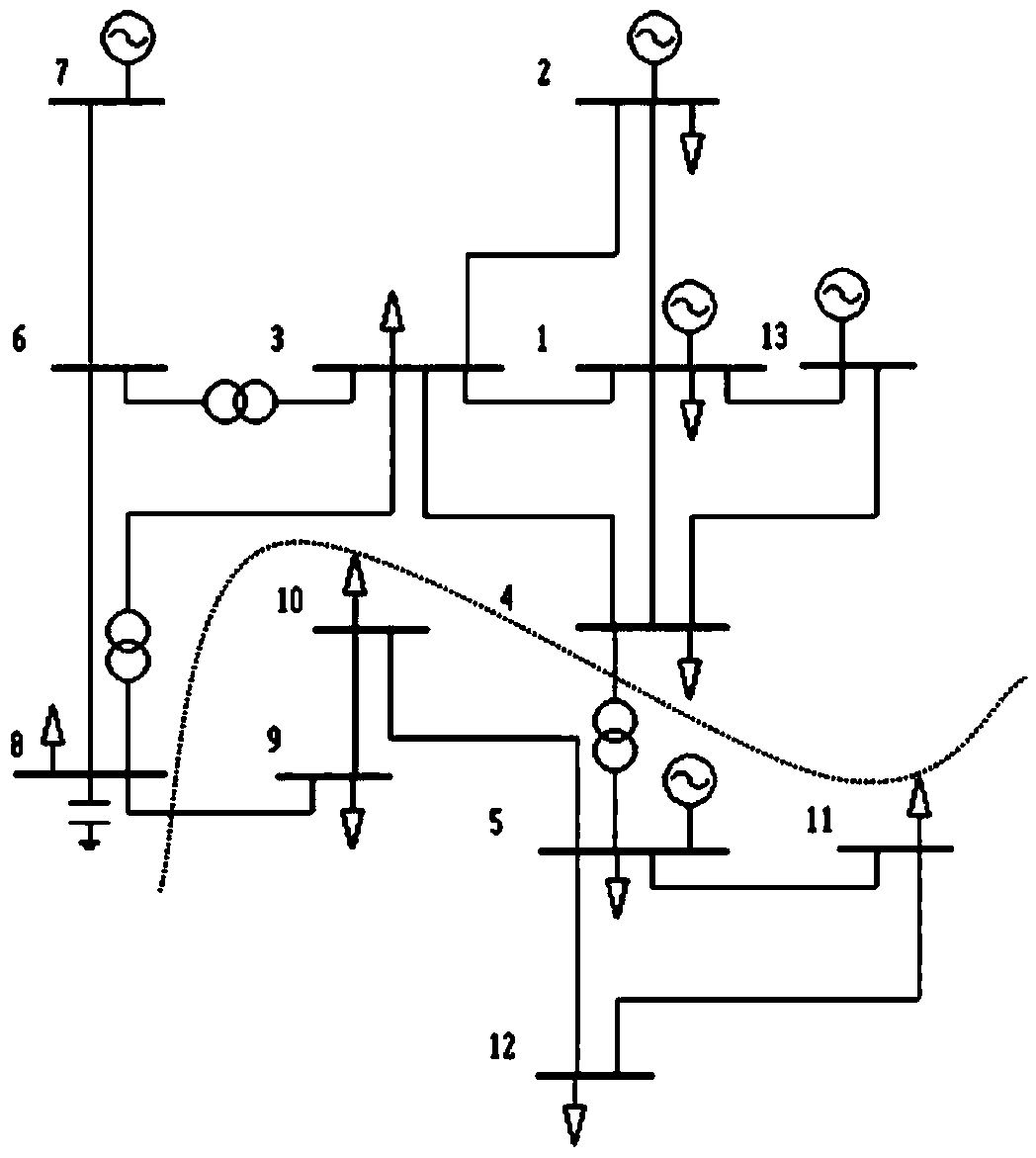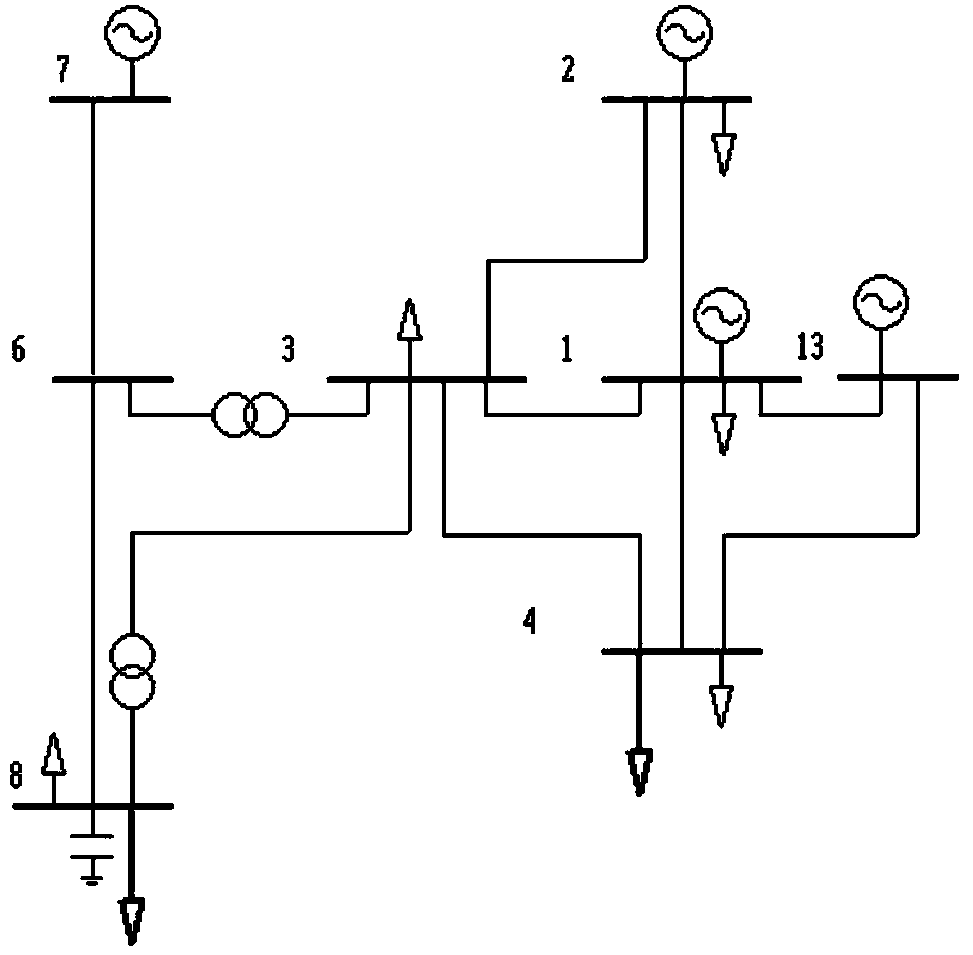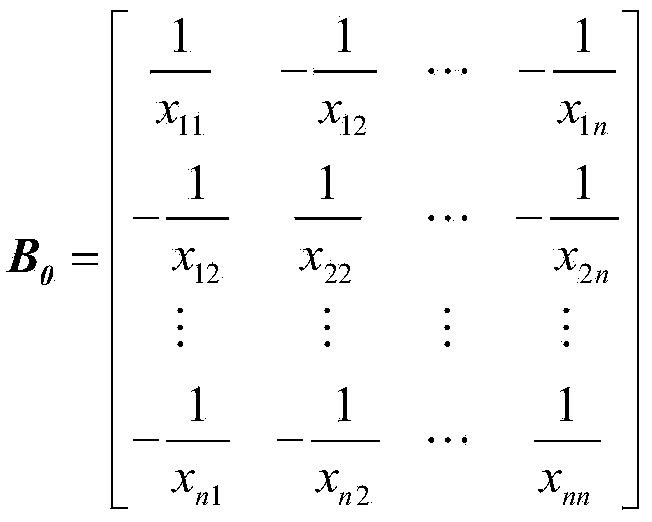Grid equivalent method based on phase angle difference of call lines
A power grid equivalent and tie line technology, applied in the field of value, can solve the problem that the network equivalent simplification cannot be used, and achieve the effects of convenient related analysis and calculation, reduction of power grid scale, and good equivalent accuracy
- Summary
- Abstract
- Description
- Claims
- Application Information
AI Technical Summary
Problems solved by technology
Method used
Image
Examples
Embodiment 1
[0036] Such as figure 1 As shown, the grid equivalence method based on the phase angle difference of the tie line includes the following steps:
[0037] a) Divide the test grid into two sub-grids. Sub-grid A is composed of nodes 1, 2, 3, 4, 6, 7, 8, and 13, of which 4 and 8 are boundary nodes; Sub-grid B is composed of nodes 5, 9, 10, 11, and 12, of which 5 and 9 Is the boundary node; branch 4-5 and branch 8-9 are the tie lines between subsystems;
[0038] b) Suppose the voltage amplitude of all nodes in the power grid is 1, and use the DC power flow method to obtain the voltage phase angle θ of each node i (i=1,2,...13);
[0039] c) Calculate the line power on branch 4-5 according to the obtained DC power flow solution And line power on branch 8-9 will As equivalent injection power, connect to node 4 and node 8 respectively.
[0040] d) Obtain the grid equivalent network containing only the equivalent injected power of sub-grid A and sub-grid B, such as figure 2 Shown.
[0041]...
Embodiment 2
[0047] On the basis of the first embodiment, the system load level is gradually increased from 1.0 times to 3.0 times, the power flow calculation is performed on the grid after the equivalent value, and the approximate power flow result at this time is compared with the accurate power flow result before the equivalent value to obtain a table 2.
[0048] It can be seen from the results in the table that with the increase of load level, the voltage amplitude and phase angle errors of all nodes are within 4%, indicating that the proposed equivalent model and method have good performance under different load levels. Value accuracy.
[0049] Table 2 Comparison of power flow results of each node in sub-grid A under different load levels
[0050]
[0051]
[0052] The above calculation and analysis results show that the proposed equivalent model and calculation method can be used to approximate the local power grid when the accurate power flow solution of the power grid is unknown, and the...
PUM
 Login to View More
Login to View More Abstract
Description
Claims
Application Information
 Login to View More
Login to View More - R&D
- Intellectual Property
- Life Sciences
- Materials
- Tech Scout
- Unparalleled Data Quality
- Higher Quality Content
- 60% Fewer Hallucinations
Browse by: Latest US Patents, China's latest patents, Technical Efficacy Thesaurus, Application Domain, Technology Topic, Popular Technical Reports.
© 2025 PatSnap. All rights reserved.Legal|Privacy policy|Modern Slavery Act Transparency Statement|Sitemap|About US| Contact US: help@patsnap.com



